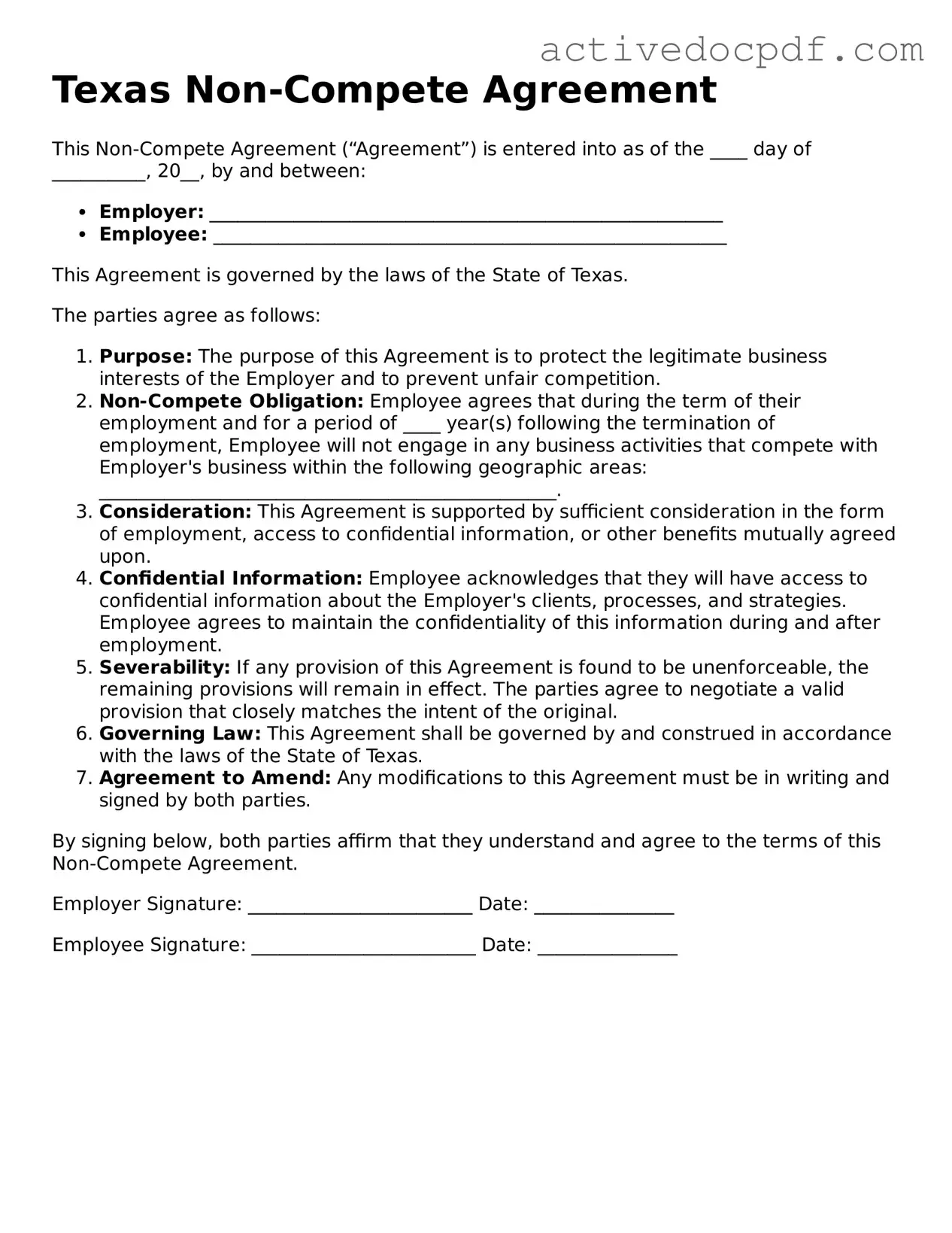Legal Non-compete Agreement Document for Texas State
A Texas Non-compete Agreement is a legal document that restricts an employee's ability to work for competitors or start a competing business after leaving their current employer. This form aims to protect the employer's business interests by preventing the misuse of confidential information and trade secrets. Understanding the nuances of this agreement is essential for both employers and employees to ensure fair practices and compliance with Texas law.
Edit Form Online
